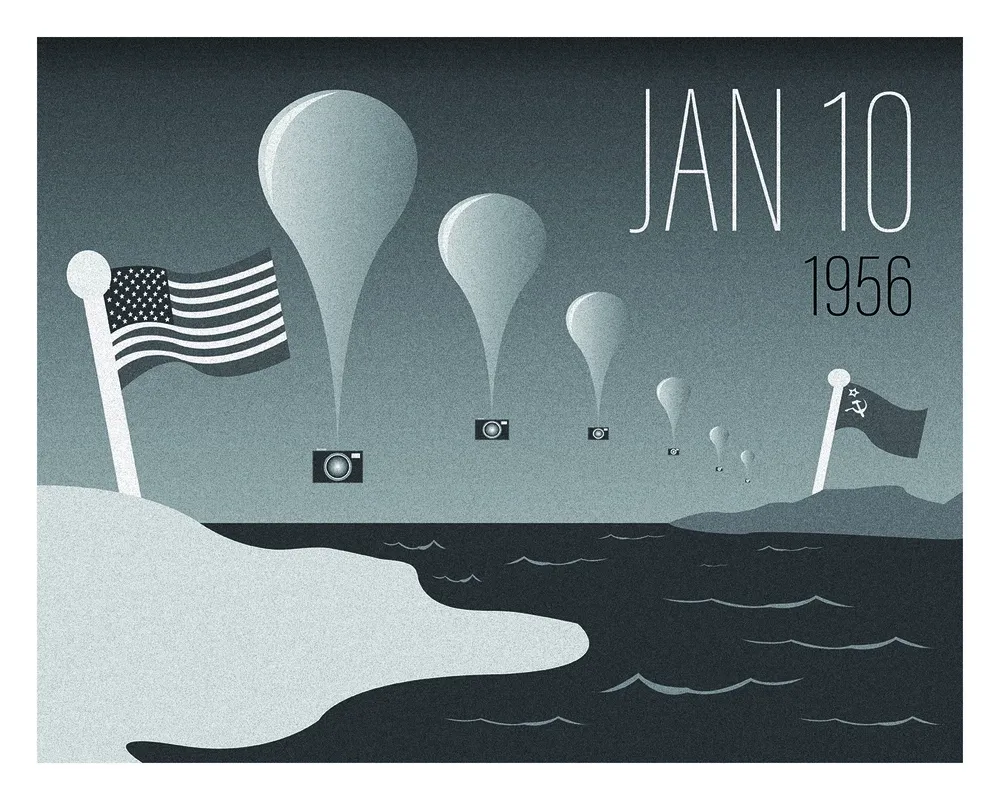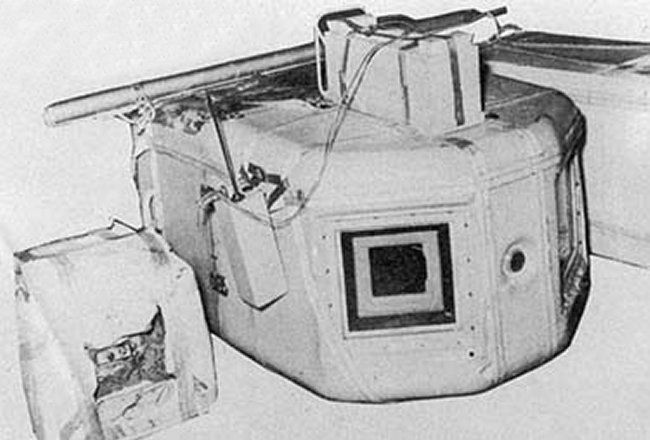Project Genetrix: A High-Flying Chapter of Cold War History

Spy balloons have been on everyone's mind lately, and that made me want to share some of the stories of America's spy balloons used during the Cold War. Balloons may not seem like the most exciting or innovative technology, but in 1955 satellites for reconnaissance just weren't a thing yet. The Soviets would launch Sputnik in 1957, and the US would start launching its own reconnaissance satellites in 1960.
Project Moby Dick began in 1954 at Holloman Air Force Base in New Mexico. There, a team of engineers and scientists developed a special type of balloon that could reach altitudes of over 100,000 feet and stay aloft for weeks or even months. The project was based on previous experiments conducted by the U.S. Navy during World War II and by scientists at General Mills (yes, the cereal company) after the war. General Mills had developed expertise in balloon technology and was contracted by the Air Force to produce and launch the spy balloons from bases in Europe and Asia.
The balloons were made of polyethylene plastic and filled with helium gas. They carried a gondola that contained a camera, a radio transmitter, a battery pack, and a parachute. The camera was programmed to take pictures at regular intervals and transmit them back to ground stations via radio waves. The parachute was designed to deploy automatically when the balloon lost altitude or encountered foul weather.

The US launched hundreds of spy balloons between 1951 and 1956 under Project Genetrix. Each balloon carried cameras that could take pictures every few seconds and radio transmitters that could send signals back to ground stations. The balloons were designed to fly at altitudes of about 60,000 feet (18 km) during daylight hours, which was higher than most Soviet fighter jets could reach (foreshadowing).
A quick aside, a lot of sources will incorrectly attribute the US spy balloon program as a whole to Project Moby Dick – however Project Moby Dick was focused on testing the technology and doing high-altitude research over the United States starting in 1951, and later over Europe. Project Moby Dick balloons were never used at scale, however Project Moby Dick's peaceful research was used as the cover story when a Project Genetrix balloon was found.
The idea was to take advantage of the jet stream, a fast-moving current of air that flows from west to east across the northern hemisphere. The US hoped that by launching spy balloons from bases in Europe and Asia, they could catch the jet stream and fly over the Soviet Union unnoticed. This is because they floated over Soviet military installations, nuclear facilities and missile sites.
After they'd made their rounds, they'd be collected from the air, or recovered when they crashed. Test units would be painted white, and active units used in the operation were painted orange to assist in their recovery1, 2.
Soviet pilots, however, soon learned that in the night air the balloons would lose altitude, so in the early morning they would be easily within range to shoot down. Some of them also drifted off course and landed in neutral or hostile countries, causing diplomatic incidents and public outrage. This led to heavy losses, and of the 512 balloons launched only 44 were recovered with useful information2. Even with that 13,813 photos covering over a million square miles of Sino-Soviet territory had been taken, roughly 8 percent of the nations’ landmass. These photos formed a baseline for future spy satellites to be compared to3.
The project caused a diplomatic row between the US and Soviet forces when the Soviets discovered the remnants of a US spy camera in February 1956. They accused the US of violating their airspace and sovereignty and demanded an explanation. The US denied any knowledge of the balloons and claimed they were part of a scientific research program that studied cosmic rays and weather patterns (Project Moby Dick). The Soviets did not buy this cover story and protested strongly at the United Nations. The project was eventually cancelled in 1958.
Spy balloons became obsolete after the development of spy satellites and U-2 spy planes. The first successful spy satellite was launched by the US in 1960 under Project Corona. It could take high-resolution pictures of large areas of land and eject film capsules that could be recovered by planes or ships. The first U-2 spy plane flew over the Soviet Union in 1956 under Project Dragon Lady. It could fly at altitudes of over 70,000 feet (21 km) and take detailed photographs with powerful cameras.
Spy balloons are a historic technology that was widely used by the US during the Cold War to gather intelligence on the Soviet Union. They were an ingenious but risky way to peek behind the Iron Curtain, but had many issues. However, some historians argue that Project Moby Dick had some positive outcomes despite its failures. They claim that it helped advance scientific knowledge about the upper atmosphere, balloon engineering and aerial photography. They also suggest that it contributed to deterrence and psychological warfare by creating uncertainty and paranoia among Soviet leaders who feared being spied on by invisible enemies.
The recent Chinese spy balloon crisis has sparked renewed interest and debate about the use and effectiveness of spy balloons as a tool for intelligence gathering and surveillance. Maybe balloons are ready for a comeback.
Citations
- This detail was revealed in a CBC news article, after a camera module for a Project Genetrix balloon was found crashed in New Brunswick, Canada in 1962. Decades later the details of the box revealed it was likely launched for training purposes.
- In his article “A Brief History of Project Moby Dick, the Cold War’s Least Believable Surveillance Strategy”, Elliot Carter interviews Robert Rennick, who was one of the pilots who flew C-119 Flying Boxcars to retrieve Moby Dick balloons over the Pacific Ocean. He tells how he used radar and visual cues to spot the balloons and how he used a hook device to snag them in mid-air. He also shares some anecdotes about his encounters with Soviet fighters and Japanese fishermen.
- Multiple accounts of Project Genetrix are located on the C&E Museum website. These include details on how by pure happenstance the Project Genetrix balloons were able to detect previously unknown radar installations.
Additional References
In his memoir “The Cold War: A Military History”, David Miller recounts how he was part of a team that launched a Moby Dick balloon from a base in Germany in 1955. He describes how they inflated the balloon with helium, attached a camera and a radio transmitter, and released it into the sky. He also recalls how they monitored its progress on a map and hoped that it would reach its target over Soviet territory.
In his book “Spying on America: The FBI’s Domestic Counterintelligence Program”, James Kirkpatrick Davis relates how he was assigned to track down a Moby Dick balloon that had landed near his hometown in Indiana in 1956. He explains how he followed a radio signal to locate the balloon and its payload, which included photographs of Soviet military installations. He also reveals how he was interrogated by FBI agents who suspected him of being a Soviet spy.